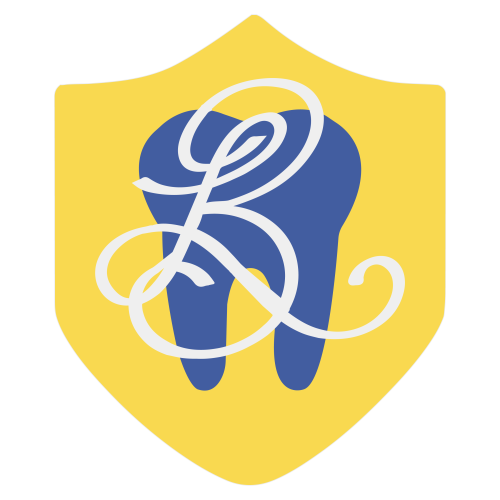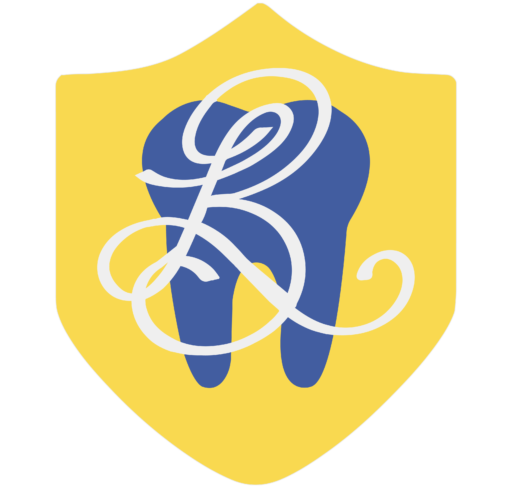Oral Surgery
Modern Dentistry with a gentle touch
Tooth Extractions
Natural teeth are ideal for biting, chewing and maintaining mouth and jawbone structure, which is why a dentist’s first priority is to help restore, save and repair your natural teeth. However, sometimes a tooth extraction is unavoidable.
The dentist at your Aspen Dental practice will make sure you’re comfortable before, during, and after your extraction procedure. This includes walking you through every step of the tooth extraction, as well as the use of local anesthetics.
Feeling uneasy about your tooth extraction? Be sure to talk to your dentist about how you’re feeling so that they can help. In addition, here are helpful tips on overcoming dental anxiety.
According to the American Dental Association
Post-Operative Instructions
Sometimes, teeth need to be removed due to decay, disease, or trauma. When you get a tooth “pulled,” it’s called an extraction.
It’s natural that changes will occur in your mouth after the procedure. Here are some general guidelines to help promote healing, prevent complications, and make you more comfortable while you recover.
Follow all instructions from your dental team. This will help make sure that your mouth heals properly after your tooth is removed. These instructions will also help to lower your risk of having any problems while your mouth heals.
Bleeding
Your dentist may place a gauze pack on the extraction site to limit bleeding. This will also help a blood clot to form, which is necessary for normal healing. This gauze pack should be left in place for 30 to 45 minutes after you leave the dentist’s office.
Do not chew on the pack. There may be some bleeding or oozing after the pack is removed. If so, here’s what to do:
- Fold a piece of clean gauze into a pad thick enough to bite on. Dampen the pad with clean, warm water and place it directly on the extraction site.
- Apply pressure by closing your teeth firmly over the pad. Maintain this pressure for about 30 minutes. If the pad becomes soaked with blood, replace it with a clean one.
- Do not suck on the extraction site or disturb it with your tongue.
- A slight amount of blood may leak from the extraction site until a clot forms. However, if heavy bleeding continues, call your dentist. (Remember, though, that a little bit of blood mixed with saliva can look like a lot of bleeding.)
How to clean your mouth after your tooth is removed
Day of procedure:
- Do not clean the teeth next to the healing tooth socket for the rest of the day.
- You should still brush and floss your other teeth.
- You can also brush your tongue. This can help get rid of the bad breath and unpleasant taste that are common after an extraction.
Day after procedure:
- Begin cleaning the teeth next to the healing tooth socket.
- Gently rinse your mouth with warm salt water after meals to keep bits of food out of the extraction site.
- To make a salt water rinse: mix half a teaspoon of salt in 1 cup of warm water.
- Try not to rinse your mouth too hard because this could loosen the blood clot. If you have high blood pressure, discuss with your dentist whether you should rinse with salt water.
Avoid using a mouthwash during this early healing period or until your dentist tells you when you are able to do so.
Take pain medication only as directed by your dentist
- If your dentist has prescribed medicine to control pain and inflammation, or to prevent infection, use it only as directed.
- If the pain medication prescribed does not seem to work for you, don’t take more pills or take them more often than directed — call your dentist.
Swelling and pain are normal after a tooth is removed
To help reduce swelling and pain:
- try applying a cold compress to your face, like an ice pack or a cold, moist cloth
- your dentist may give you specific instructions on how long and how often to use a cold compress
Call your dentist right away if you have any of these issues.
- fever, nausea, or vomiting
- ongoing or severe pain, swelling, or bleeding
- pain that gets worse with time instead of better
If you cannot reach your dentist, go to a hospital emergency room.
Eating and drinking
Day of procedure:
- Drink lots of liquids and eat soft, nutritious foods.
- Avoid hot liquids and alcoholic beverages.
- Do not use a straw, as this can disturb the blood clot.
Day after procedure:
- Begin eating solid foods the next day or as soon as you can chew comfortably.
- For the first few days, try to chew food on the side opposite the extraction site.
- When it feels comfortable, you should resume chewing on both sides of your mouth.
Other things you should know
- Avoid alcoholic beverages or mouthwash that has alcohol in it for 24 hours.
- Limit physical activity like exercise or lifting heavy objects for 24 hours after the extraction. This will reduce bleeding and help the blood clot to form.
- If you do get a dry socket, report it to your dentist right away. A dressing may be placed in the socket to protect it until the socket heals and to reduce any pain.
Do not disturb the blood clot that forms in the tooth socket!
The blood clot that forms in the tooth socket is an important part of the normal healing process. You should avoid doing things that might disturb the clot. If the blood clot is disturbed and breaks down, you can get a dry socket. Dry sockets can be extremely painful. To lower your risk of a dry socket, be very careful to not do anything that can disturb the clot.
For the first 24 hours, do not suck, spit, slurp, or any other action that creates suction in your mouth and puts pressure on your blood clot. This means:
- Do not drink through a straw
- Do not smoke (smoking can also prevent your gums from healing properly)
- Do not suck on candy, popsicles, lollipops, etc.
- Do not slurp up soups or other liquids
- Do not rinse your mouth with too much force
This ADA educational message displayed by permission.

Wisdom Teeth Removal
Before any tooth removal, your dentist will take x-rays. This may have been done at a previous appointment to determine the need the removal, but more may be required on the day.
The tooth and surrounding tissue is numbed using local anaesthetic injected into the gums. Some patients that are particularly anxious about the procedure may also receive some form of sedation.
Once the local anaesthetic has taken full effect, your dentist will use specialist tools to loosen the connective tissue surrounding the tooth. Another set of dental tools are then used to actually remove the tooth. You may feel a lot of pressure at this point, but the anaesthetic will ensure you feel no pain. Your dentist may decide that stitches will improve healing. The stitches are dissolvable and shouldn’t create any additional discomfort.
When You Might Need Surgery
Sometimes removing a wisdom tooth requires a small surgical procedure. This might be because your wisdom tooth is impacted and has not emerged through the jaw bone, or because it is broken into pieces and can’t be removed without leaving a piece behind.
As with the procedure described above, you will receive a local anaesthetic to numb the tooth and the surrounding area. As the procedure is a little more invasive, it is more common to receive at least a mild sedation in surgical cases.
If the wisdom tooth is covered over by gum tissue, the dental surgeon will make a small incision in order to expose the tooth. They will then proceed as described above, by loosening the connective tissue around the tooth and removing it using specialist instruments. If the tooth is fully impacted it will be covered by bone. The dental surgeon will use a small handheld drill to clear the bone from around the tooth.
They may also use the drill to divide the tooth into sections to avoid it breaking unpredictably during the final extraction stages. If a wisdom tooth breaks then each piece has to be removed separately and it may require further drilling and a deeper incision into the gum tissue.
The Right Time for Wisdom Teeth Removal
Many teens and adults have wisdom teeth emerge without any discomfort or pain, and in these cases it would be inappropriate to remove them. However, it is usually during the emergence of the teeth that it becomes apparent there is a problem.
Our modern diet has resulted in a larger dental arch and there is often just no room for the wisdom teeth to emerge. This can cause extreme pain in the mouth and head and push the other teeth out of alignment. It is also common for wisdom teeth to begin emerging at an angle so that they cannot emerge fully as the other molars are blocking the way.
Wisdom teeth are more susceptible to decay and infection as they are right at the back of the mouth and are often difficult to reach for regular daily dental care. Wisdom teeth can also become broken.
In all of these instances your dentist will examine the tooth, and most likely take x-rays, to determine whether an extraction is necessary. X-rays will also show whether a standard or surgical extraction is required.
What to Expect During Healing
The mouth and gums heal incredibly quickly, so if you follow the simple instructions provided by your dentist then you should have no problems.
You will be asked to bite down on sterile gauze for approximately 30 minutes after surgery to ensure the bleeding has stopped. You will probably feel some discomfort and have some swelling for a few days after the procedure, but if you experience significant pain then contact your dentist.
For the first 2 hours after surgery, you should avoid unnecessary talking, eating, and drinking to allow the area time to clot. After this drink plenty of fluids and stick to soft foods for the first 24 hours. You shouldn’t brush your teethor rinse out your mouth for 12 hours after the procedure, and avoid the area of removal when brushing for a few days. Unless the procedure was particularly tricky, you won’t be prescribed painkillers, but you can take pharmacy pain medication as required.
The idea of any dental procedure makes a lot of people nervous, but knowing what to expect can make the experience less worrying. Wisdom tooth removal is now a very common procedure carried out by qualified professionals so there is no need to avoid it.

© BLDentalandOrthodontics
ADDRESS
2200 Los Rios Blvd, Suite #100,
Plano, TX
ABOUT US
Meet Our Team
Meet Dr. Mohammad Chowdhury
Meet Dr. Shahin Sultana
Our Services
OFFICE HOURS
Tuesday : 9
Wednesday :CLOSED
Thursday : CLOSED
Friday : 9
Saturday :
